Hundreds of islands have vanished beneath the waters of the Chesapeake Bay. Since 1850, this includes approximately 10,500 acres of island habitat as well as an unknown number of invaluable cultural and archaeological artifacts, some dating back 20,000 years. Land subsidence, rising sea level, and wave-induced erosion, both natural and anthropogenic all contribute to and compound this ongoing and accelerating landscape saga. The Parsons Island Conservation and Regeneration Plan proposes to collocate opportunities for cultural resource conservation, habitat regeneration, and resiliency enhancements on this unique Chesapeake Bay island as both a means and method to catalyze collective action and stimulate impactful stewardship. Considered within the context of large-scale, federally funded island restoration projects in the Chesapeake Bay, this cooperative and adaptive undertaking represents a new approach in addressing the loss of valuable islands in the nation’s largest estuary.
Chesapeake Conservancy
2021 ASLA Honor Award For Planning & Analysis
CONTEXT | Disappearing Islands of the Chesapeake | Islands in the Chesapeake Bay are disappearing beneath its waters drowning cultural resources, habitats, and essential landscape infrastructure. Located 3.5 nautical miles south of Kent Narrows, Parsons Island is the only remaining island in Maryland’s Eastern Bay.
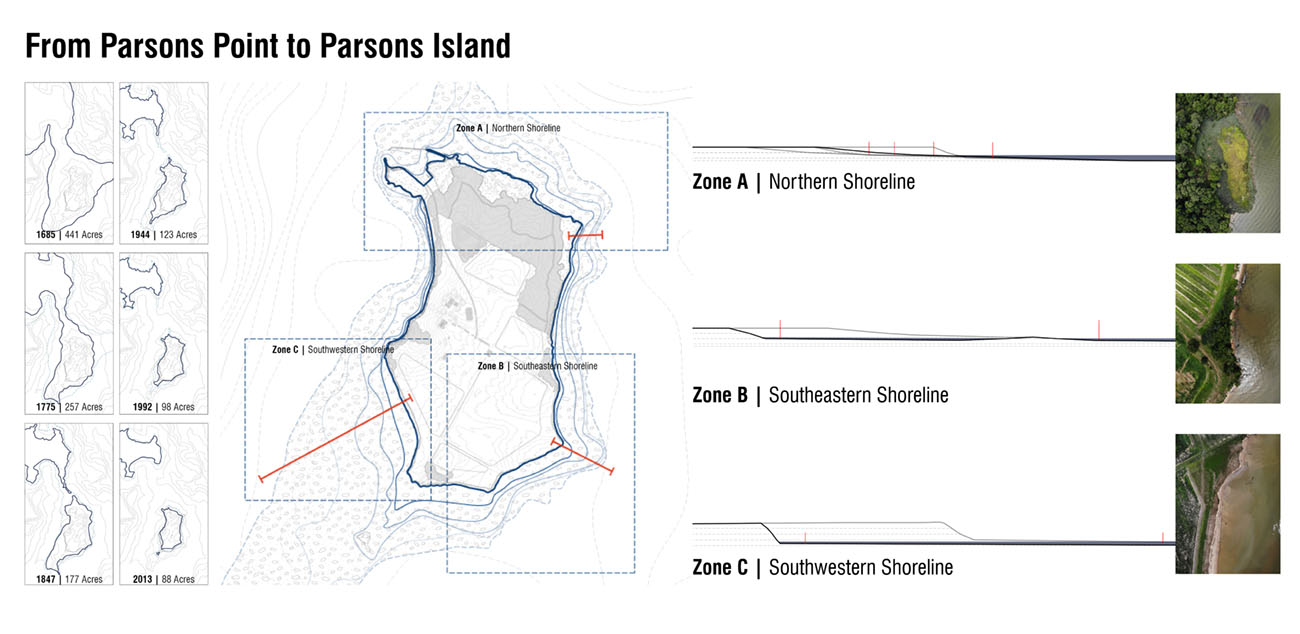
From Parsons Point to Parsons Island | Parsons Island, first documented as Parsons Point in 1647 at 447 acres has been reduced to 78 acres by forces including erosive wind and boat driven waves, rising sea levels, and land subsidence.
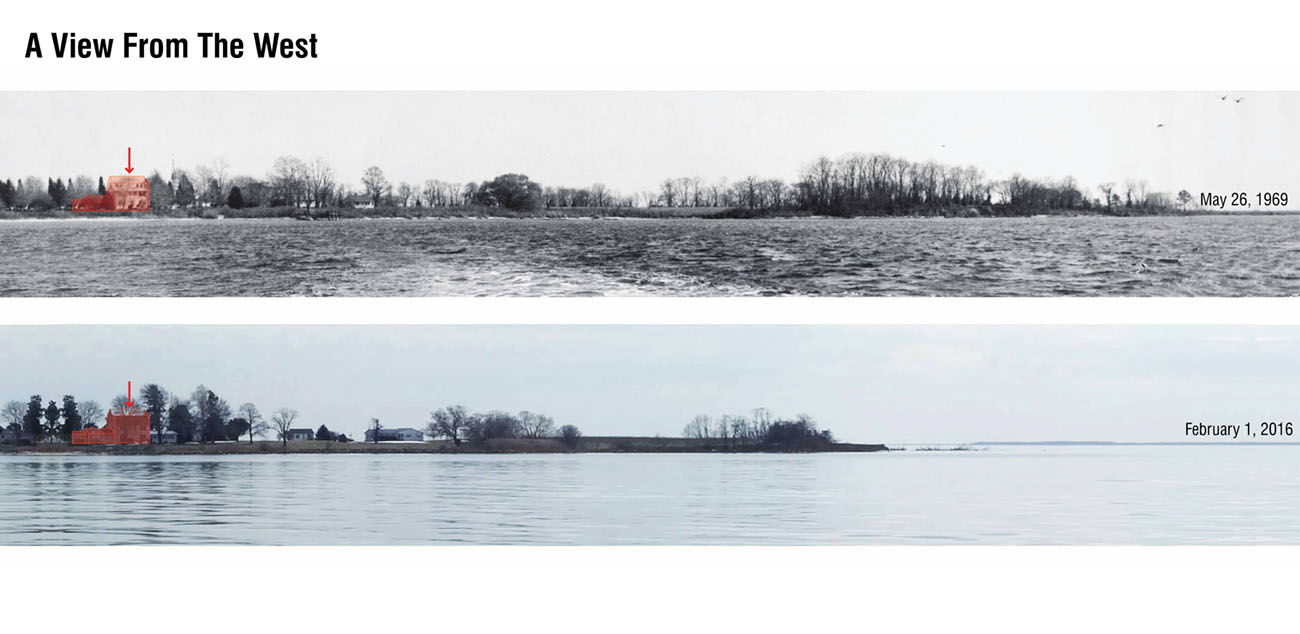
A View From the West | Since 1969, the erosion rate at Parsons Island has increased, jeopardizing its future. Recognizing this threat, the island’s owners partnered with the Chesapeake Conservancy and a landscape architect led team to develop the Parsons Island Conservation and Regeneration Plan.
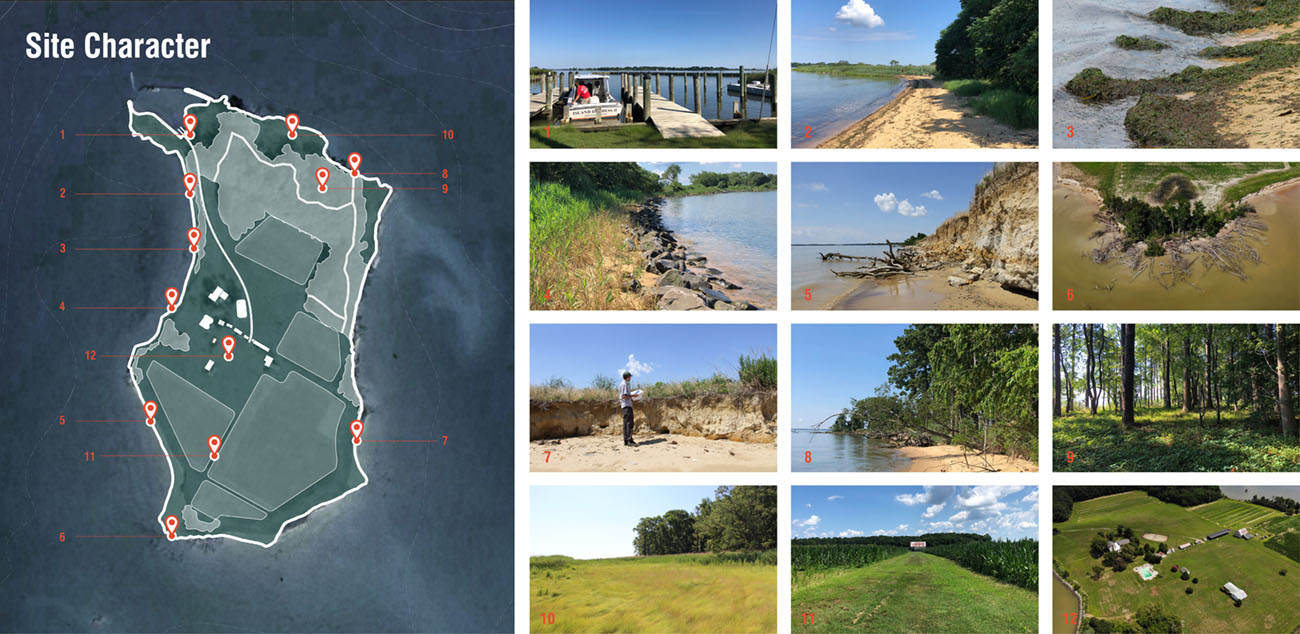
Site Character | Parsons’ 78 extant acres includes island forests, agricultural fields, tidal marshes, open water ecologies, eroding coastal cliffs, and a homestead with two guest houses and out buildings.
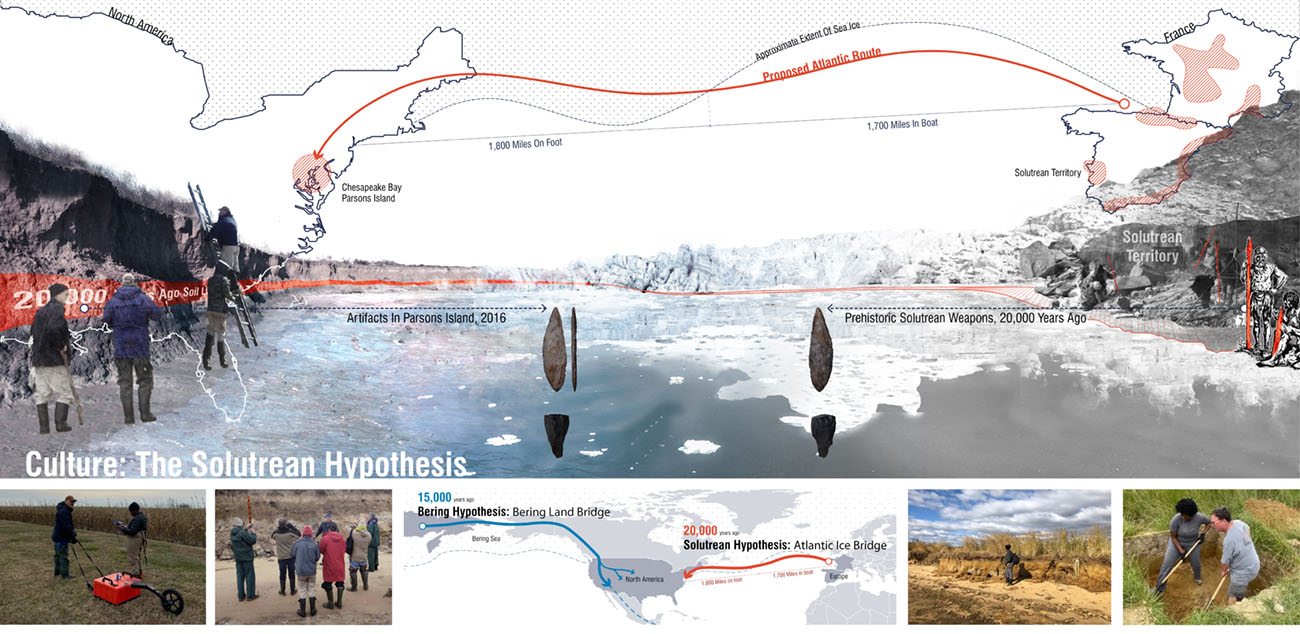
Culture: The Solutrean Hypothesis | Cultural artifacts discovered on Parsons’ eroding southwestern shoreline indicate its original inhabitants arrived from the Solutré territory of France some 20,000 years ago – suggesting a new timeline and arrival route for human settlement on the North American continent.
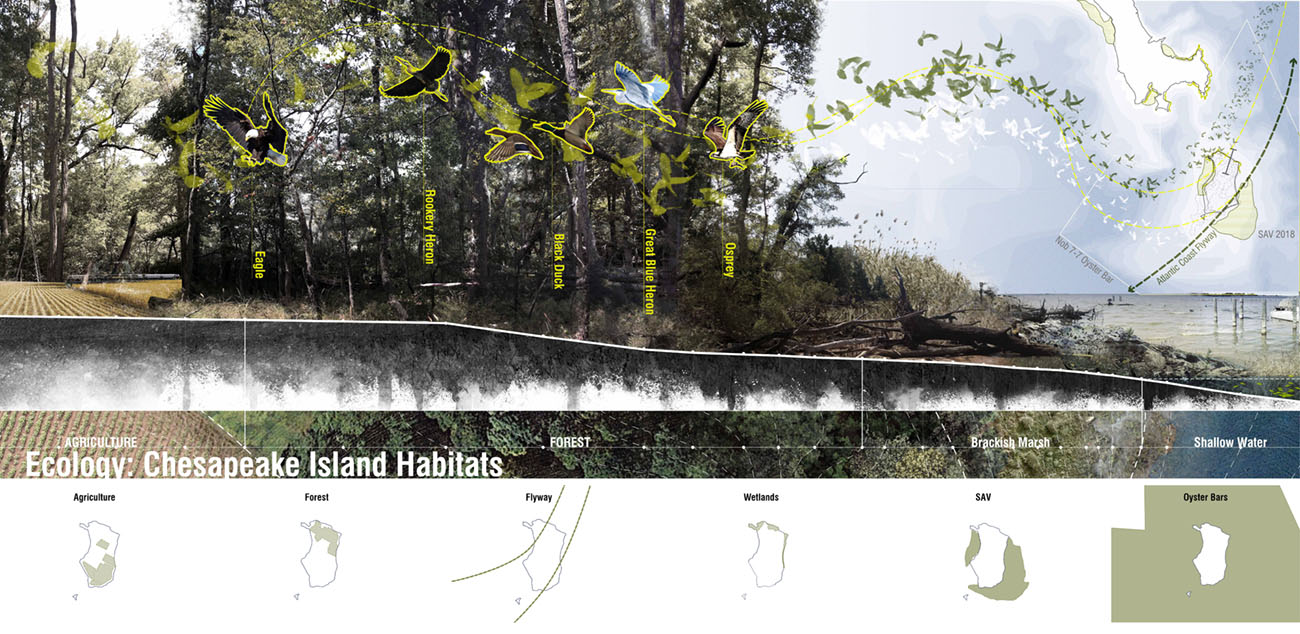
Ecology: Chesapeake Island Habitats | Parsons Island ecologies include rare Chesapeake Island forest habitat, tidal wetlands, mudflats, oyster bars, submerged aquatic vegetation (SAV) beds, and farm fields that serve as critical habitat for resident and migratory birds, mammals, reptiles, amphibians, fish, arthropods, and mollusks.
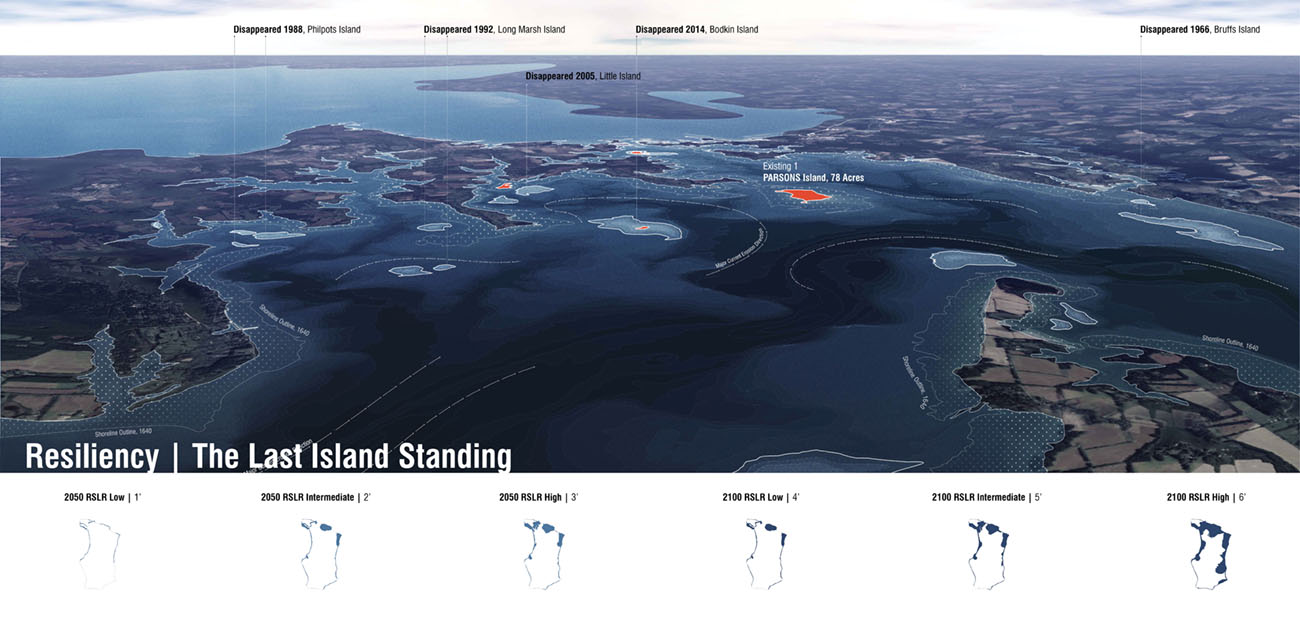
Resiliency: The Last Island Standing | As one of the only islands remaining in Eastern Bay, Parsons’ persistence provides an essential infrastructural service as a resiliency buffer against wind-induced waves, climate generated storm events, and relative sea level rise (RSLR) in the basin.
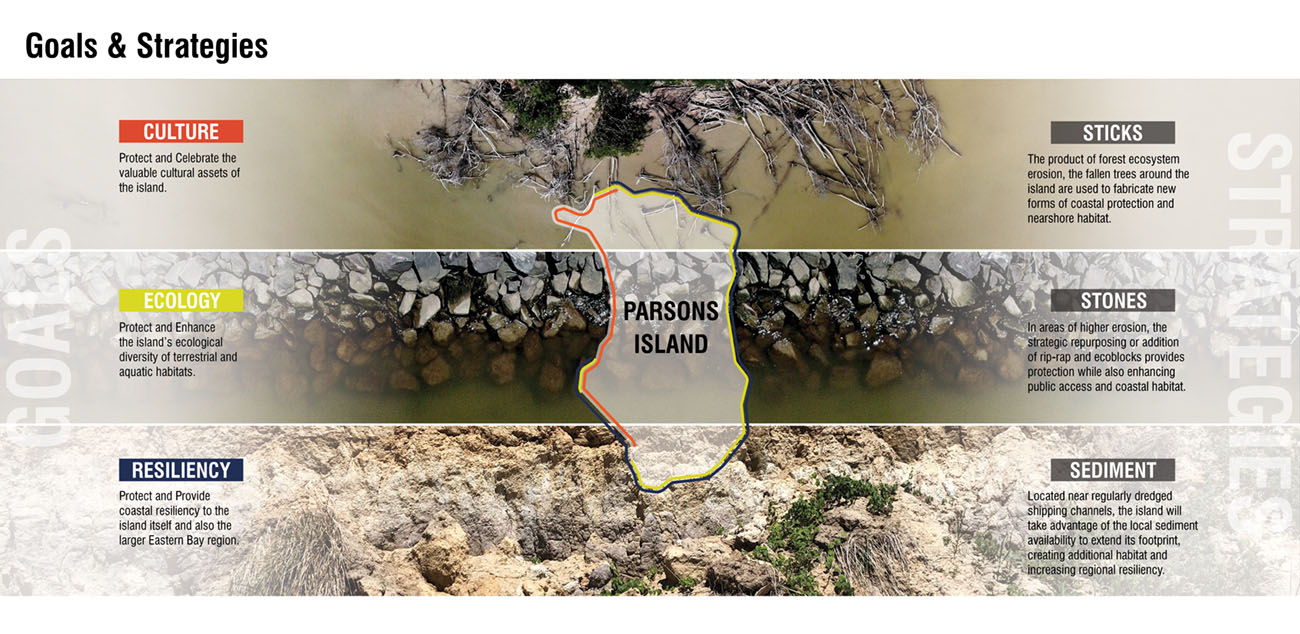
Goals & Strategies | The Parsons Island Conservation and Regeneration Plan proposes to collocate opportunities for cultural resource conservation, habitat regeneration, and resiliency enhancements using existing and/or local sticks, stones, and sediment to advance contextually-relevant, cost effective, modular, and scalable design strategies.
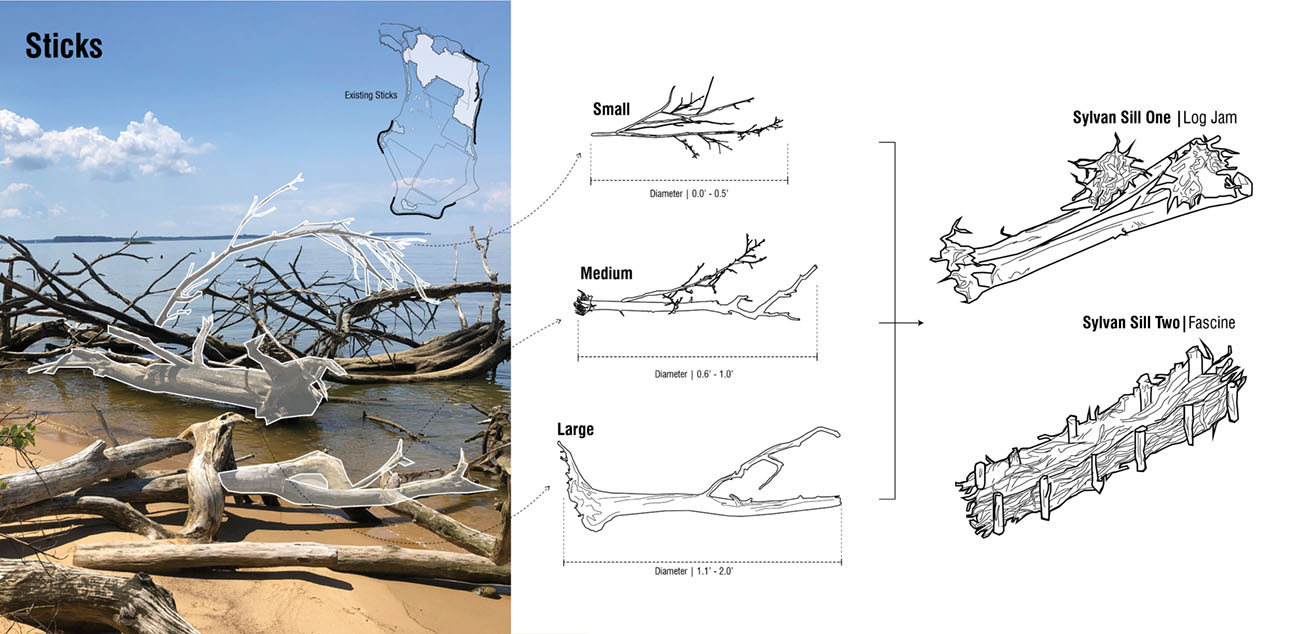
Sticks | Fallen trees including trunks, roots wads, and branches that have succumbed to erosion will be relocated and reconfigured to create ‘sylvan sills’ that attenuate waves, catch sediment, and support aquatic habitat in the island’s northern nearshore environment.
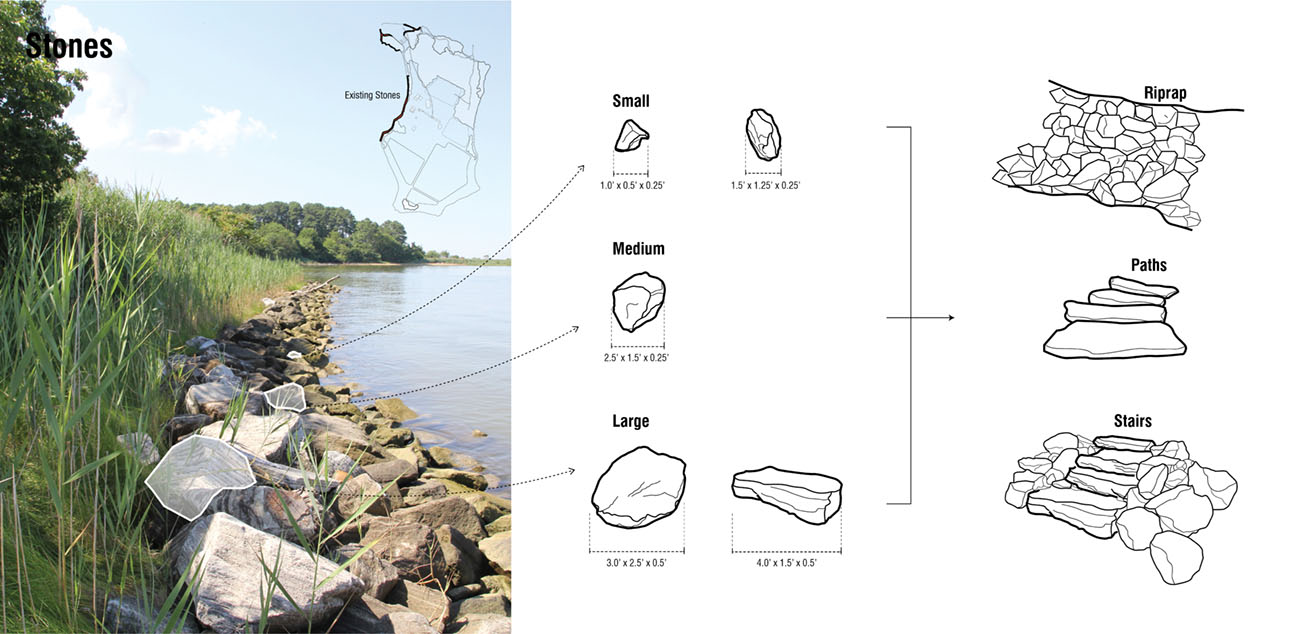
Stones | On the southwestern shore, existing riprap will be extended and tied into a new stone stair and path providing access to and preserving the island’s cultural resources with an offshore living breakwater that supports aquatic habitat and enhanced wave attenuation.
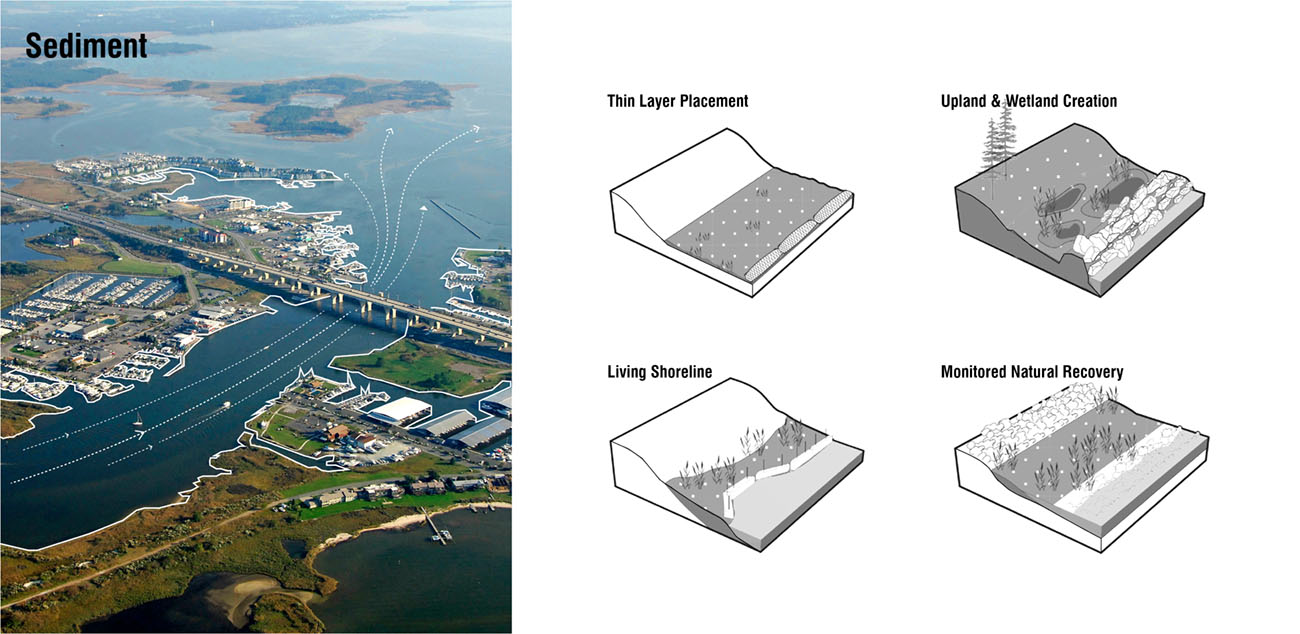
Sediment | Dredged material from the Kent Narrows waterway will be repurposed to regenerate a portion of the island’s original footprint with living berms, thin layer placement, living shorelines, and monitored natural recovery creating new mudflats, SAV beds, marshes, and island forest.
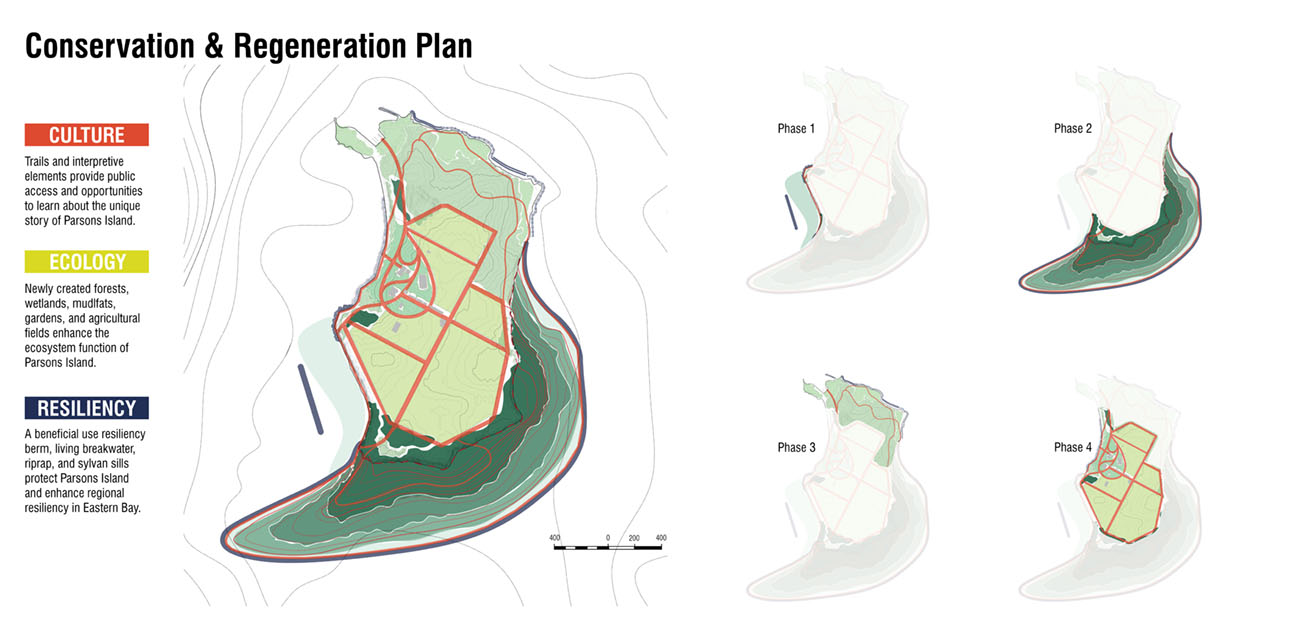
Conservation & Regeneration Plan | Plan implementation is anticipated to occur in parallel phases with simultaneous actions and asynchronous outcomes influenced by regulatory, financing, and technical drivers. Phase One Southwest; Phase Two South and East; Phase Three North; Phase Four Homestead.
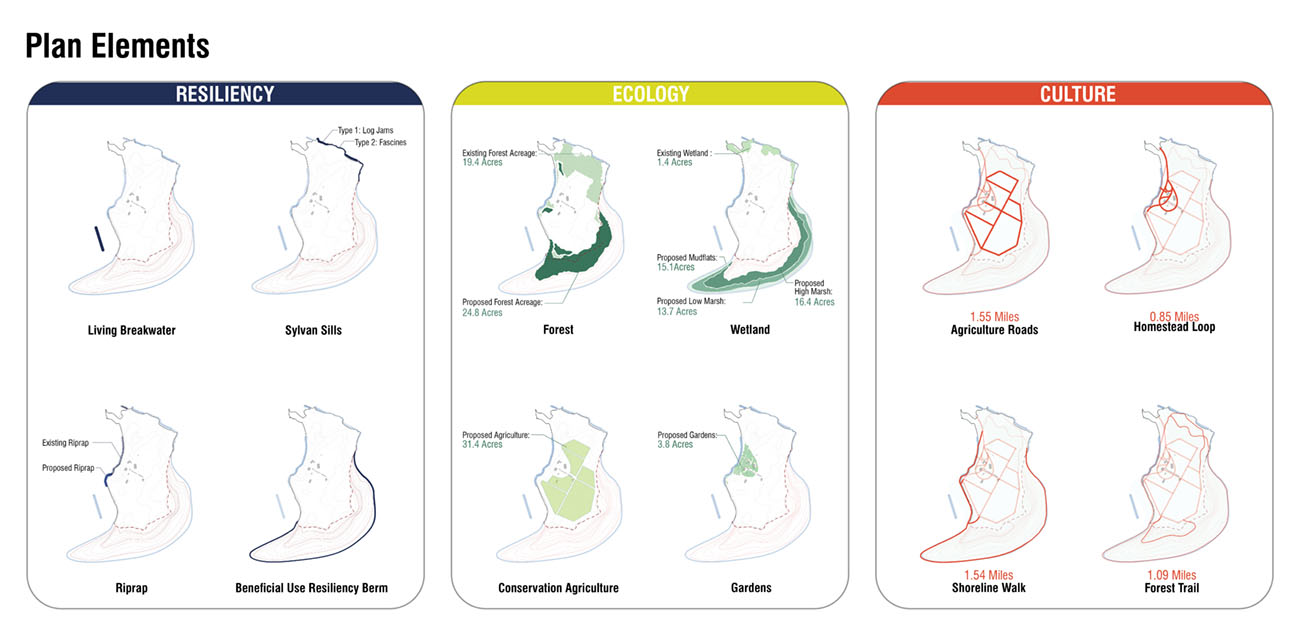
Plan Elements | The integrated stick, stone, and sediment strategies of the Parsons Island Conservation and Regeneration Plan will create a series of richly textured and high performing landscape elements that reveal and enhance the islands cultural, ecological, and resiliency assets.
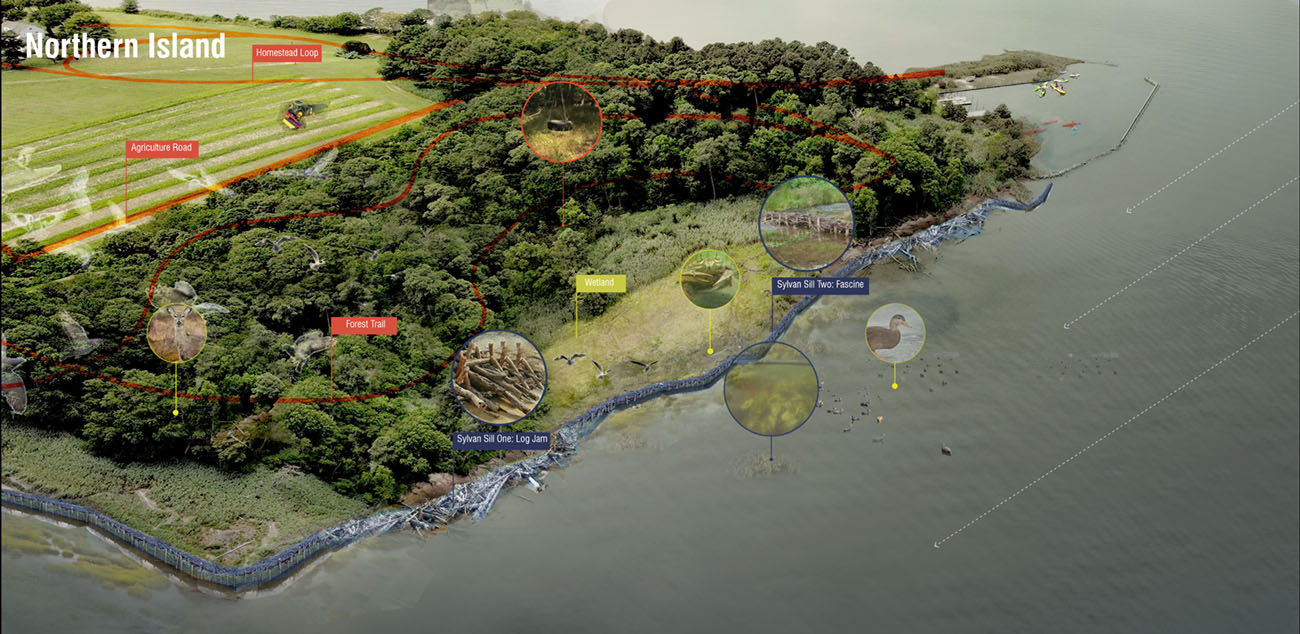
Northern Island | Two types of ‘sylvan sills’, log jams and fascinces will interface between wetlands and open water on the northern shores attenuating waves, catching sediment, and providing new aquatic habitat that can be explored from the water or forested paths.
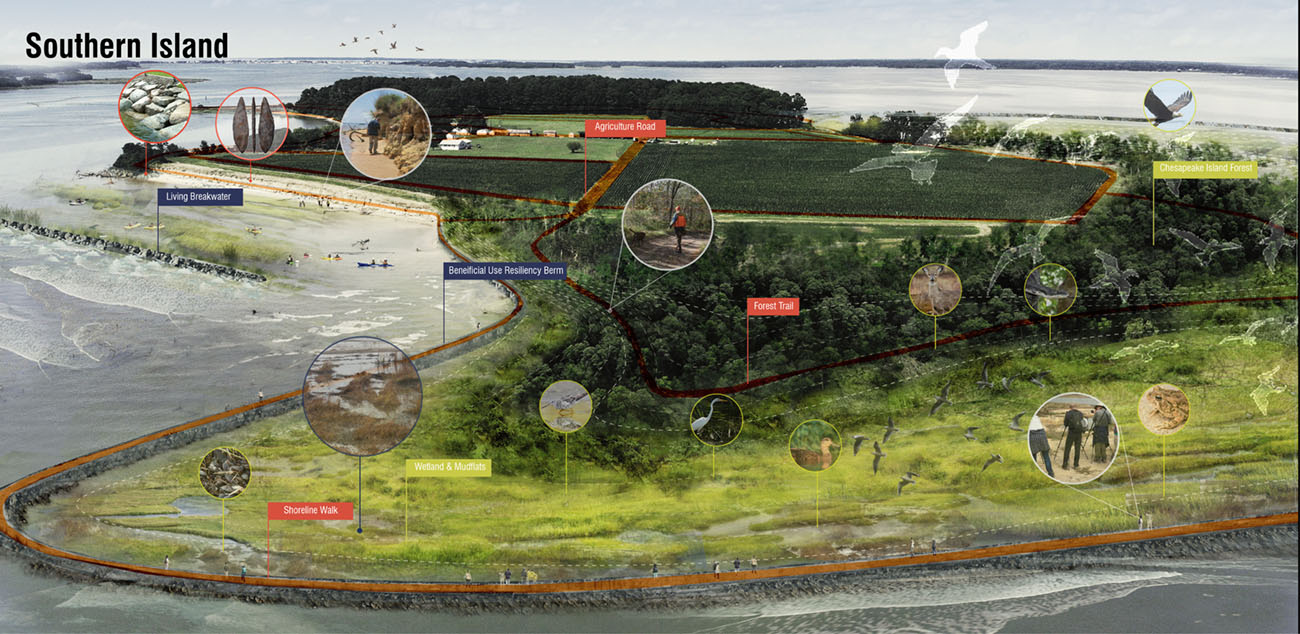
Southern Island | A connected trail network and interpretive elements through rich habitats including shoreline paths, forest walks, agricultural roads, and a homestead loop will create a quintessentially Chesapeake experience that sets a new precedent for conservation and regeneration in the region.